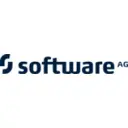Starting at $65 per month
View PricingOverview
What is Neo4j?
Neo4j is an open source embeddable graph database developed by Neo Technologies based in San Mateo, California with an office in Sweden.
Recent Reviews
Pricing
Aura Professional
$65
Cloud
per month
Community Edition
Free
On Premise
Enterprise Edition
Contact Sales
On Premise
Entry-level set up fee?
- No setup fee
For the latest information on pricing, visithttps://neo4j.com/pricing
Offerings
- Free Trial
- Free/Freemium Version
- Premium Consulting/Integration Services
Starting price (does not include set up fee)
- $65 per month
Product Details
- About
- Tech Details
- FAQs
What is Neo4j?
Neo4j Video
What Is Neo4j?
Neo4j Technical Details
| Deployment Types | On-premise, Software as a Service (SaaS), Cloud, or Web-Based |
|---|---|
| Operating Systems | Windows, Linux, Mac |
| Mobile Application | No |
Frequently Asked Questions
Neo4j is an open source embeddable graph database developed by Neo Technologies based in San Mateo, California with an office in Sweden.
Neo4j starts at $65.
The most common users of Neo4j are from Small Businesses (1-50 employees).




